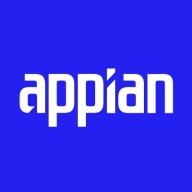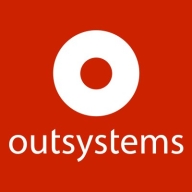


Find out what your peers are saying about Microsoft, ServiceNow, Oracle and others in Rapid Application Development Software.
They see return on investment in terms of cost savings, time savings, more efficient processes, and more efficient employees.
Appian is very efficient, allowing us to build a lot of applications within a financial year, making it cost-effective.
Developing that same project in OutSystems can be completed in around 40 to 50% less time, requiring only six resources.
They have removed the costs associated with on-prem infrastructure, including data center costs, power costs, and physical server costs.
The return on investment is good when implementing for ourselves and for other clients.
Manually, there are huge numbers that come up because these integrated tools help organizations make the right decisions with all the information in one place, while manual methods lack visibility.
Their customer service is responsive, and the team is very prompt for support.
The technical support for Appian rates as 10 out of 10 because they have a great support team.
The technical support is generally good.
Many helpful videos and documentation are available on the OutSystems site, making it relatively easy to learn the platform.
The support is exemplary and deserves a perfect rating.
Obtaining support for maintenance is the current challenge because they don't have a presence in the local market.
I have contacted them four to five times over the past two years, and they have been quite helpful.
On a scale of one to 10, Appian rates as a nine for scalability.
Initially, without much coding, I can easily handle five thousand records.
Appian is scalable, but it depends on how you build your applications.
They can be deployed vertically and horizontally, supporting as many deployments as needed.
There are no limitations or performance issues with ServiceNow; it is cloud-based, so it is highly scalable and performs well.
It is capable of vertical scaling with no issues.
I rate the scalability of ServiceNow as an eight on a scale of one to ten.
It depends on how it has been designed and how it has been configured.
The stability of Appian would rate as nine, as it's a stable environment.
It is cloud-based, so it is highly scalable and performs well.
I haven't faced any issues with stability; I've rarely seen any downtime.
ServiceNow is stable enough.
It has room to improve for use cases where the users are public facing, where anonymous users could come to a site and run a business workflow or interact with some data.
If there is a very complex process that includes a lot of data transitioning and memory-centric processes, it consumes a lot of memory.
I would like to see more enhancement in the user interface to allow more freedom in designing the sites and pages.
It is crucial to be aware of which module corresponds to which application in real-time projects, as there are multiple applications.
I would like to see more integration between the use of artificial intelligence to speed up the process delivery time.
What I would like to see is more servicing business analysts in the next release of OutSystems.
It makes no sense in my opinion, and they should offer the team at the front to help customize the product to fit each company's needs, as every company has different demands and forms of submitting a request that need adjustment over time.
There is a need for bug or error tracking in ServiceNow.
Their customer support could make it a great solution, not just product support but also their relationship with partners and training initiatives in different regions.
On the pricier side, both Appian and Pega are enterprise-level solutions, placing them on the slightly higher side.
The pricing of Appian is based on the number of users and generally ranges from 70 to 100 USD per user per month.
The price of Appian, on a competitive landscape, is a little bit on the higher side for companies, rating maybe a 6.5.
Subsequent users can be added at an additional cost per user; exact pricing details can be found on the OutSystems site.
ServiceNow's pricing can be justified if more functionality is required.
ServiceNow does come with a price.
ServiceNow is expensive for all regions.
The zero-code integration feature is remarkable, allowing for ease of data transfer and workflow enhancement.
Appian is aiding in leveraging AI technologies in multiple ways: one way is for developers, as they make development efficient and quick by enabling developer co-pilots across various phases of the application, which helps design Appian quickly and provides suggestions along the way.
It is easy for me to define the process and create configurable workflows.
OutSystems offers a lot of reusable components and solutions that I can simply drag and drop and use, which has a significant impact on project delivery time.
OutSystems has a very good learning curve for developers.
I have recommended it in situations where very rigid enterprise structures are blocking them from being agile.
ServiceNow provides a wide range of functionality, covering all the necessary modules, unlike Jira which is primarily for IT.
Automation capabilities are impressive, bolstered by a vast repository of out-of-the-box connectors and plugins that facilitate integration with various applications worldwide.
The features of ServiceNow that I find most valuable include its ability to easily access ticket details if you know the ticket number, monitor the timeline of when the ticket was created, and see the current status.
| Product | Market Share (%) |
|---|---|
| ServiceNow | 9.8% |
| OutSystems | 6.5% |
| Appian | 7.8% |
| Other | 75.9% |



| Company Size | Count |
|---|---|
| Small Business | 20 |
| Midsize Enterprise | 9 |
| Large Enterprise | 41 |
| Company Size | Count |
|---|---|
| Small Business | 18 |
| Midsize Enterprise | 7 |
| Large Enterprise | 29 |
| Company Size | Count |
|---|---|
| Small Business | 54 |
| Midsize Enterprise | 36 |
| Large Enterprise | 163 |
Appian is a unified low-code platform and solution used by businesses to build enterprise applications and workflows. This product adapts to the needs of clients and the technologies they are already using to combine their data in a single workflow and maximize resources. The platform has four main components through which it transforms the work process for companies of various sizes. They are:
Appian is utilized across a diverse set of industries, including automotive and manufacturing, energy and utilities, education, financial services, telecom and media, transportation, retail, insurance, healthcare, and life sciences. The most frequent use cases of Appian are customer journey, governance, risk and compliance, operational efficiency, supply chain, distributed order management, and environmental, social, and governance (ESG) management.
Appian Features
Appian has various features that allow users to create solutions for their businesses. These features can be separated into a few groups according to function, including automation, low-code application development, and integrations and data. Some of the most frequently used features of Appian include:
Appian Benefits
The benefits of using Appian include:
Reviews from Real Users
A practice leader - digital process automation at a computer software company values Appian highly because the product is easy to develop, low-code, and has a good user interface.
Alan G., an advisory board member at Codecon VR, Appian offers a clear application life cycle, easy to learn documentation, and comes with a fundamentals course.
OutSystems is a platform for low-code application development that unites design, code, and deployment to simplify development so any business can create innovative solutions in a timely manner. There are various use cases an organization can employ with OutSystems, including:
OutSystems offers faster development and deployment times than hand-coding while delivering unique and personalized solutions to its customers. The main focus of OutSystems is high-performance low code which enables businesses to create functional products that answer their needs. It offers clients the ability to develop enterprise-grade applications with a high level of security.
The product stands out from its competitors as it offers:
It ensures its clients that the applications built using this platform are as scalable as hand-coded ones while increasing workspace productivity and evolving applications’ capabilities.
OutSystems Features
OutSystems has various features through which users can develop and deploy highly efficient applications and other products. Some of the features include:
OutSystems Benefits
The solution offers a wide array of benefits to companies that utilize it in their application development. Some of these benefits include:
Reviews from Real Users
Harikrishnan R., a technical lead at Netlink Software Group America Inc, likes OutSystems because the tool helps with validation, offers good features, and is reliable.
An owner at a consultancy thinks OutSystems is versatile with great scalability and great technical support.
ServiceNow is a cloud-based task-management platform that specializes in IT operations management (ITOM), IT services management (ITSM), and IT business management (ITBM). ServiceNow allows users to manage their teams, projects, and customer interactions using a variety of different plugins and apps with which it easily integrates.
ServiceNow offers prebuilt applications to support any process, as well as a framework and tools that allow you to build your own.
ServiceNow’s service management solutions include change, request, incident, problem, and cost management, as well as HR, IT, field service, and facilities management solutions. They also cover business management solutions such as vendor performance management, financial management, performance analytics and project portfolio suite, as well as governance, risk, and compliance.
“The Smarter Way to Workflow”
ServiceNow’s activities, processes, and tasks are overseen as part of a comprehensive managed workflow that supports such features as real-time collaboration, communication, and resource sharing. ServiceNow’s suite of products allow for operation using serverless computing, and include the categories of Business Apps, Customer Service, HR, IT, and Security.
ServiceNow can be used to support most workflows because of the wide range of tools it offers. These include on-suite ticketing tools, predictive modeling to manage workflows, and benchmarking for the tracking of progress. ServiceNow can assist with artificial intelligence and machine learning processes and can be used to organize the cases of a help/service desk as well as for instance management and problem management. It also smoothly integrates with many legacy systems.
ServiceNow offers service management software for industries including:
Cloud services
Education
Financial services
Government
Healthcare
Manufacturing
Telecommunications
Reviews from Real Users
PeerSpot users prefer ServiceNow to its competitors because of its scalability, stability, and ease of use. It helps everyone in the company to be on the same page by creating a single source of record across all departments. One user stated that “I’ve definitely used over 20 project management solutions, but they can't be compared with ServiceNow.” Another said that “ServiceNow is an industry leader in multiple areas and provides an excellent ROI.”